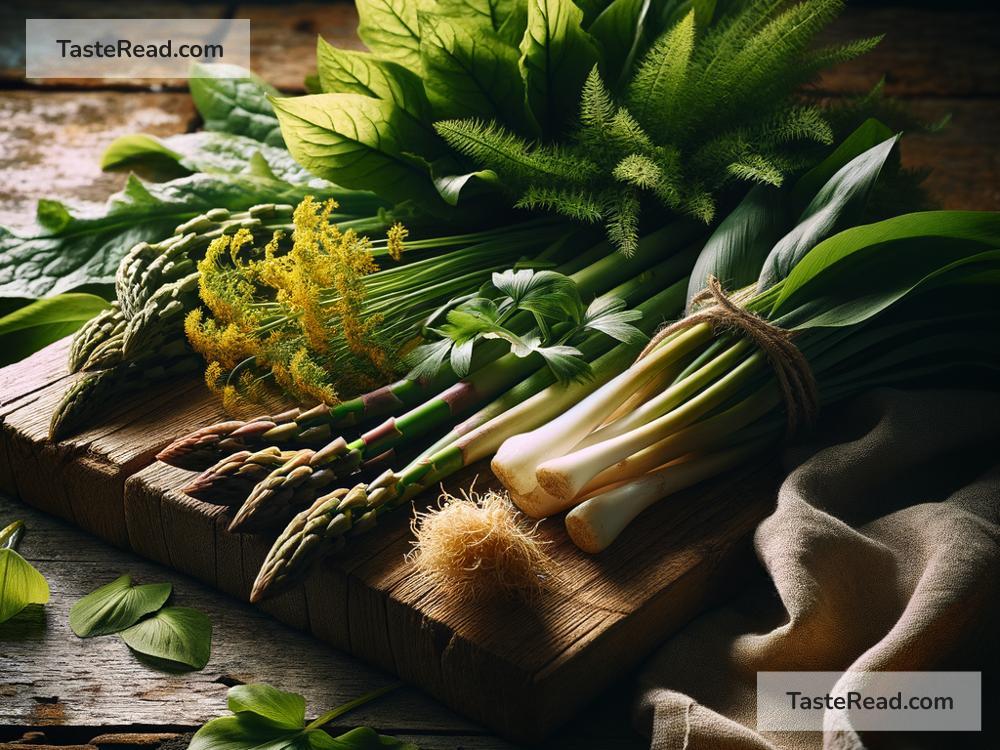Why Wild Vegetables Have More Intense Flavors Than Cultivated Ones
When was the last time you tasted a wild vegetable? Maybe you plucked a handful of wild garlic on a hike or stumbled on a patch of dandelion greens in your backyard. If you’ve ever eaten wild vegetables, you probably noticed something remarkable—they usually have much stronger, richer flavors than the vegetables you pick up at the grocery store. Why is that? What makes wild vegetables pack such a flavorful punch compared to their cultivated cousins? Let’s explore this fascinating topic in simple language.
What Are Wild Vegetables?
Wild vegetables are plants that grow naturally in the wild without human interference. Common examples include nettles, ramps (wild leeks), purslane, chickweed, dandelion greens, lamb’s quarters, and miner’s lettuce. These plants have not been bred or intentionally farmed; they grow on their own, thriving in meadows, forests, and other natural environments.
On the other hand, cultivated vegetables are plants humans have intentionally grown for food through farming. Think lettuce, carrots, broccoli, cucumbers, and tomatoes. Cultivated vegetables have been bred and farmed for thousands of years to suit our needs and tastes.
The Flavor Difference: Wild vs. Cultivated
Wild vegetables often taste stronger, sharper, or more complex than cultivated ones. For example, wild garlic has a bold, punchy taste that many people describe as more intense and “earthy” compared to store-bought garlic. Similarly, dandelion greens have a bitterness that hits harder than most salad lettuces. So why do wild vegetables have such a unique and intense flavor?
The answer lies in evolution, growing conditions, and human interference. Let’s break it down further.
1. Wild Vegetables Defend Themselves With Flavor Compounds
In nature, plants can’t run away from threats like hungry animals or insects. Instead, they develop chemical defenses in their leaves, stems, and roots to protect themselves. These chemicals, called secondary metabolites, do things like deter pests, prevent disease, or even signal other plants to reinforce their defenses.
Interestingly, these compounds often have strong flavors. For example, bitterness in dandelion greens comes from protective chemicals like alkaloids or tannins. Similarly, wild herbs like thyme or oregano rely on oils that give them their pungent aroma and taste—these are their weapons against herbivores in the wild.
Cultivated vegetables, on the other hand, don’t need to fight so hard. Farmers often shield them from pests using pesticides or cover them in controlled growing environments. Over the generations, cultivated vegetables have been bred to be milder and less bitter since most people prefer sweeter, gentler flavors. This means many cultivated vegetables have lost some of their natural intensity.
2. Wild Vegetables Grow in Tougher Conditions
Wild vegetables thrive in untamed landscapes where they must adapt to harsh conditions to survive. They grow where the soil isn’t perfect, where water supply fluctuates, and where they have to compete with other plants for sunlight and nutrients. These challenging conditions force wild plants to become resilient, and their flavors often reflect that toughness.
For example, when wild arugula grows in rocky, nutrient-poor soil, it develops a sharper, peppery taste compared to the softer, less spicy cultivated arugula. The struggle for survival tends to enhance the flavor in wild vegetables, making them bolder and more memorable.
Cultivated vegetables, on the other hand, are pampered. Farmers choose the richest soils, control the water supply, and clear away “competitors” like weeds. As a result, cultivated vegetables don’t need to work as hard or develop those strong flavors that come from fighting for survival.
3. Humans Have Bred Cultivated Vegetables to Be Sweeter and Milder
Cultivated vegetables have been selectively bred for thousands of years to suit human tastes. Farmers often prioritize qualities like sweetness, size, and appearance over intense flavor. For example, wild carrots were small, bitter, and nutritionally dense. Over time, humans bred them to be bigger, sweeter, and less bitter—the orange carrots you know today are drastically different from their wild ancestors.
This process of selective breeding, while great for creating vegetables people enjoy eating, has also tamed the sharp flavors found in many wild plants. So, when you eat a wild vegetable, you’re tasting the “original” plant in its raw, unaltered state, complete with all its bold flavors that humans haven’t bred out.
4. Nutrient Content Plays a Role
Wild vegetables often contain more diverse nutrients than cultivated ones. Because they grow in varied environments and aren’t mass-produced, they frequently have higher levels of vitamins, minerals, and antioxidants. These nutrients can contribute to more complex and intense flavors.
Cultivated vegetables, on the other hand, are often grown in monoculture systems (large fields of a single crop) that can lead to nutrient depletion in the soil. Additionally, farmers often prioritize fast-growing varieties over those with the best nutrient profiles, which can affect flavor quality.
Wild Vegetables: A Flavor Adventure
Wild vegetables remind us that nature doesn’t always play by our rules. Their intense flavors come from their resilience, their ability to fend off threats, and their freedom to grow naturally. While cultivated vegetables are convenient and familiar, wild vegetables offer a chance to rediscover food in its rawest, most unaltered state.
If you ever get the chance, try adding some wild vegetables to your meals. Chop up some purslane into a salad, sauté ramps with your eggs, or steep fresh nettles into tea. Their bold flavors might surprise you—while they can be challenging at first, they offer a deeper, richer connection to nature and the way humans originally ate.
In a world where many foods are engineered for sameness, wild vegetables stand out as a reminder of the diversity and intensity of flavors that Mother Nature creates. And who knows? They might just inspire you to try something new and exciting.

